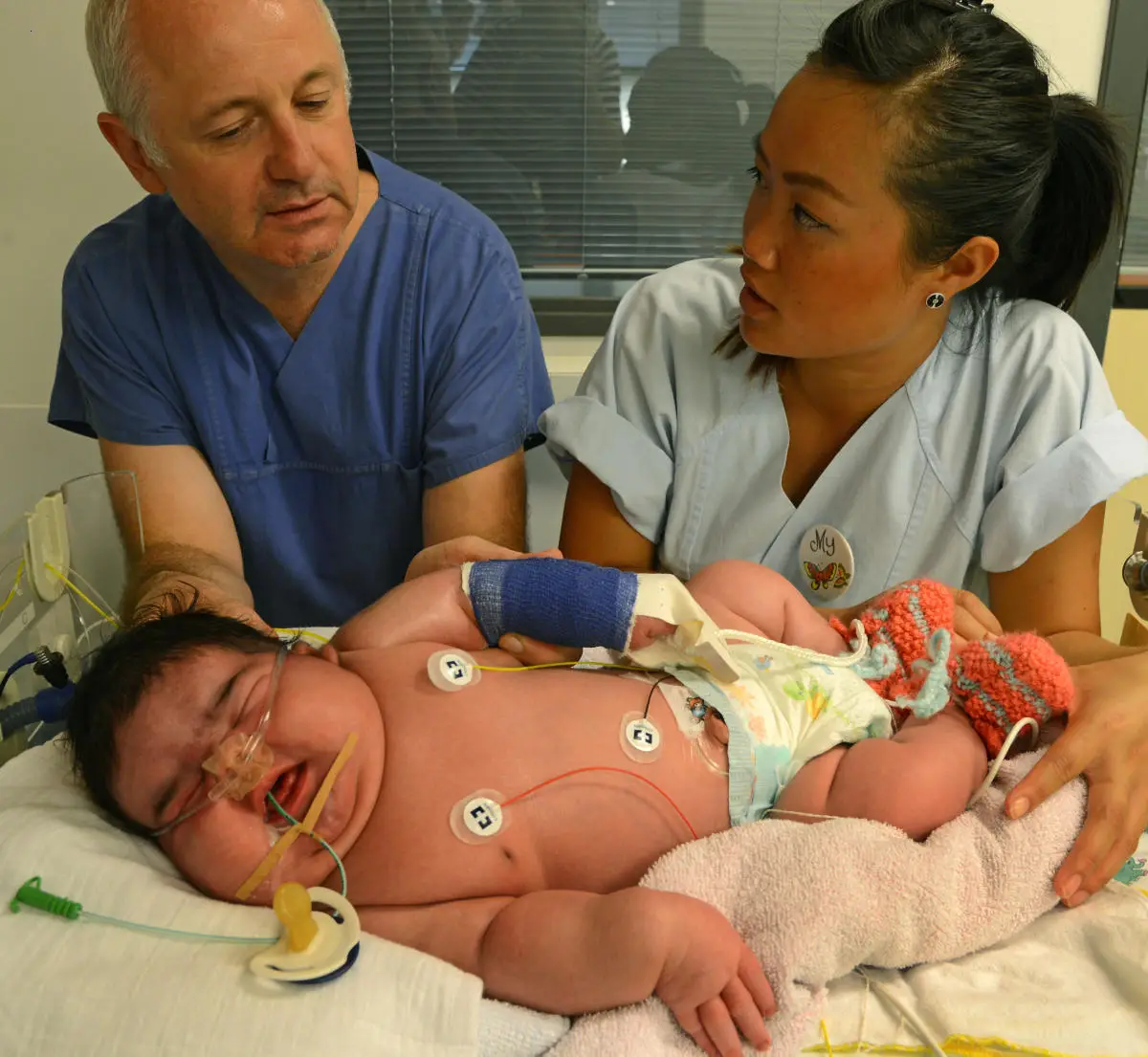
It’s a commonly held belief that giving birth naturally to a larger-than-average baby can be highly challenging. Therefore, when medical professionals recommend avoiding a vaginal delivery for sizable fetuses, opting for a cesarean section becomes the safer option for both the mother and her newborn.

In a remarkable turn of events, a German mother gave birth to a colossal baby weighing in at 13.47 pounds—naturally, without the need for a cesarean section. To put this into context, the average newborn weighs around 7.8 pounds. Maria, the mother, faced mobility challenges due to her sizeable baby bump, but she certainly made an unforgettable entrance into the realm of motherhood.
Her daughter, Jaslin, made her grand debut last week at a university hospital, tipping the scales at 13.47 pounds and stretching to 22.6 inches in length—measurements that would usually be associated with a one-year-old child. Maria was reportedly diagnosed with gestational diabetes during her pregnancy, contributing to Jaslin’s above-average weight and size at birth.

Little Jaslin made her grand entrance into the world on July 26, defying conventional medical wisdom that often recommends cesarean sections for larger babies. Remarkably, she was born naturally. Doctors determined that her mother, Maria, developed gestational diabetes when she was 24 weeks pregnant. Contrary to what some might expect, this didn’t result in a compromised quality of life for Jaslin. Instead, she emerged incredibly healthy, albeit with an impressive birth weight.

Despite her notably high birth weight, little Jaslin hasn’t gone home yet; she remains under medical observation to ensure her health remains stable. Both mom and baby are reported to be doing well and in good health. Maria, Jaslin’s mom, knew this baby was going to be larger than average. “My 11-year-old daughter weighs a third of what Jaslin does, and my two-year-old son is even smaller,” she said. “I noticed my body changing differently during this pregnancy compared to my previous ones, but I never expected her to weigh so much. Despite the surprises, I’m just thrilled that she was born safe and healthy.”
Remarkably, Jaslin is now the heaviest baby born in Germany, edging out a 13-pound boy named Jihad born in November 2011. However, she’s still a full 10 pounds lighter than the world record holder.

The birth of an astonishing 13.47-pound baby girl in Germany has left the medical community and the public alike in a state of awe. Delivered via C-section, the newborn weighs more than double the average newborn and has ignited a flurry of online discussion. While the mother had been closely monitored due to gestational diabetes, no one expected the child to arrive at such a remarkable size.
The delivery itself presented a set of challenges that required swift and effective action from the medical team. Despite the hurdles, both the mother and the baby are reported to be doing well, leaving many online commenters astonished. Analogies ranging from the baby’s size being comparable to a small turkey or a large watermelon have been making rounds on the internet.
While the birth of a baby this large is indeed rare, it’s not unprecedented. In 1955, a baby boy weighing 22 pounds and 8 ounces was born in Italy, and in 2009, a 19-pound baby girl made her debut in Indonesia.
The medical community continues to explore the contributing factors and potential risks of delivering larger-than-average babies. Although gestational diabetes is a known risk factor, other elements like maternal obesity, gestational age, and genetics can also play a role. The birth of this extraordinary baby girl also brings to light the challenges and risks faced by mothers giving birth to larger babies, such as shoulder dystocia and fetal distress.
Doctors and medical professionals stress the importance of closely monitoring pregnancies with anticipated larger babies. Interventions may be necessary to ensure the safety and health of both the mother and the child. It’s a topic that has now captured both medical and public attention, as we marvel at the boundaries of human biology.

Absolutely, the tale of the 13.47-pound newborn in Germany is more than just an extraordinary medical event—it’s a testament to the wonders and challenges of childbirth. It serves as a focal point for discussions around maternal and child health, pushing both professionals and the public to reevaluate how we approach pregnancies involving larger babies.
As we deepen our understanding of the factors contributing to larger birth weights and the potential risks involved, the medical community, policymakers, and society at large can collaborate to create guidelines that ensure the safest, most effective care for all mothers and children.
In essence, stories like this don’t just capture our collective imagination; they inspire progress, raising awareness and motivating research that benefits us all. Let this be a stepping stone toward a future where every child’s birth is as safe as it is miraculous.